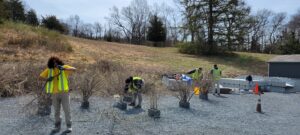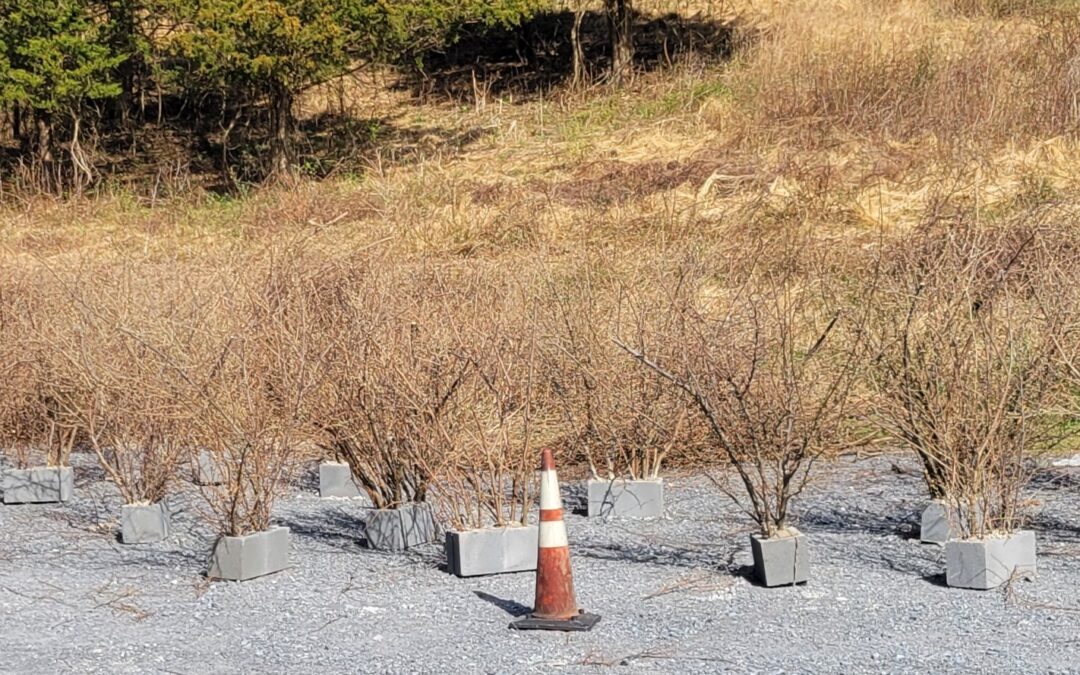Working with MCR, NJ Youth Corps of Phillipsburg helped build 78 fish habitat structures that have been being deployed in MCR since April 2024. These structures are a modified version of “Spider Bocks.” Typically, when constructing Spider Blocks, PVC tubes or plastic pipes are cemented into concrete block to create weighted vertical structure. However, MCR is using the non-native invasive vegetation species Autumn Olive (Elaeagnus umbellata), in place of the plastic tubes and pipes as the vertical structure in the blocks.
 MCR, with the help of NJ Youth Corps of Phillipsburg, has been actively managing various habitats on site for wildlife and ecosystem functionality over the past year. Part of that management is the control and removal of Autum Olive from meadows and forests. Working with NJ Youth Corps, MCR is repurposing the cut Auttum Olive to use as the vertical structure for the Spider Blocks. By using natural materials rather than plastics, we are removing the risk of plastics in the reservoir off-gassing or releasing microplastics into the water over time, while still proving better underwater structure for fish, macroinvertebrates, and other aquatic organisms to use for shelter or foraging areas.
MCR, with the help of NJ Youth Corps of Phillipsburg, has been actively managing various habitats on site for wildlife and ecosystem functionality over the past year. Part of that management is the control and removal of Autum Olive from meadows and forests. Working with NJ Youth Corps, MCR is repurposing the cut Auttum Olive to use as the vertical structure for the Spider Blocks. By using natural materials rather than plastics, we are removing the risk of plastics in the reservoir off-gassing or releasing microplastics into the water over time, while still proving better underwater structure for fish, macroinvertebrates, and other aquatic organisms to use for shelter or foraging areas.These spider block structures will be continued to be built and deployed over the next few years at MCR and are a complementary structure to the larger modified Porcupine Fish Cribs structures MCR designed, built, and deployed by MCR in 2023 using repurposed logs and branches from MCR’s forest stewardship work.

